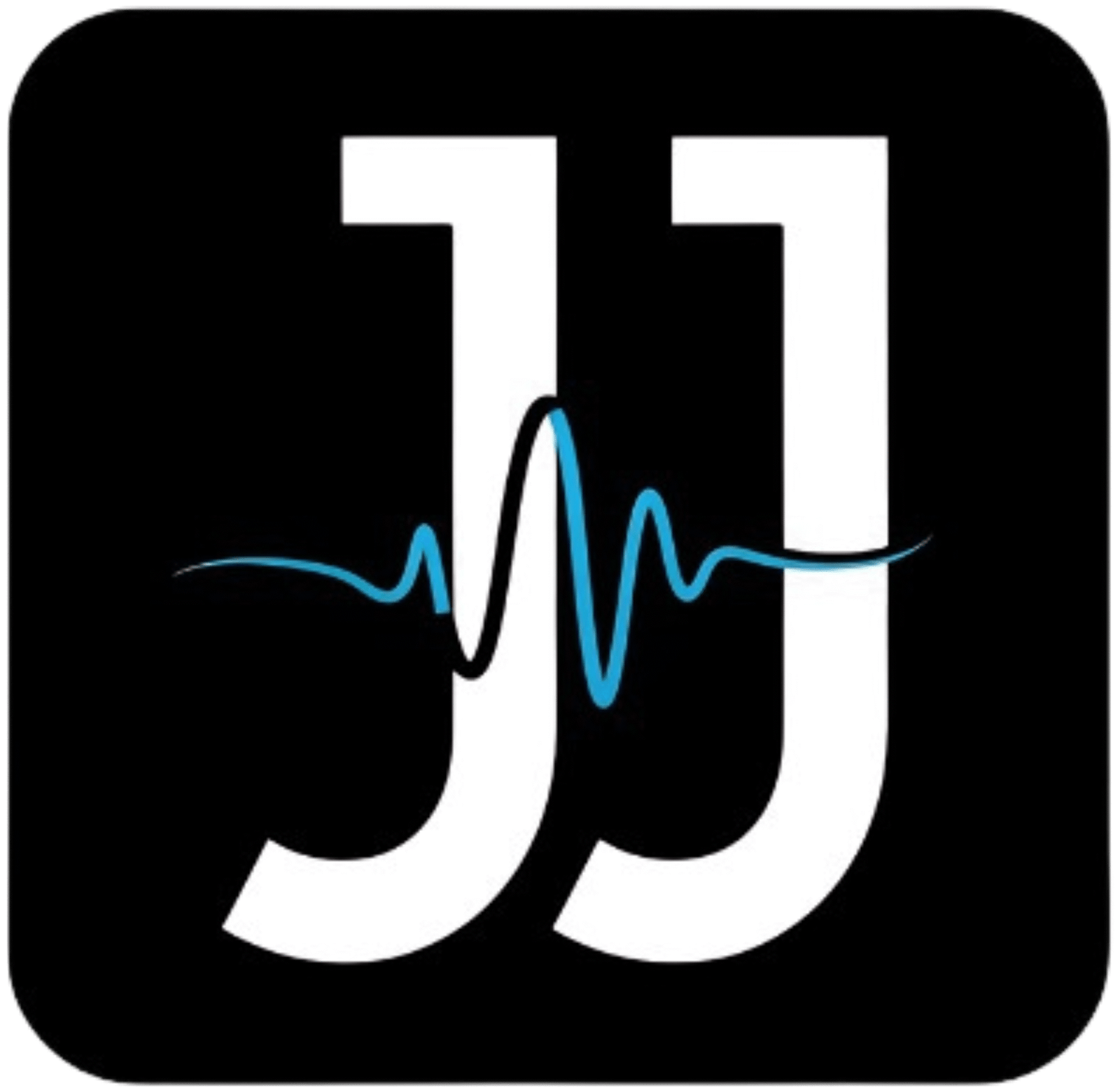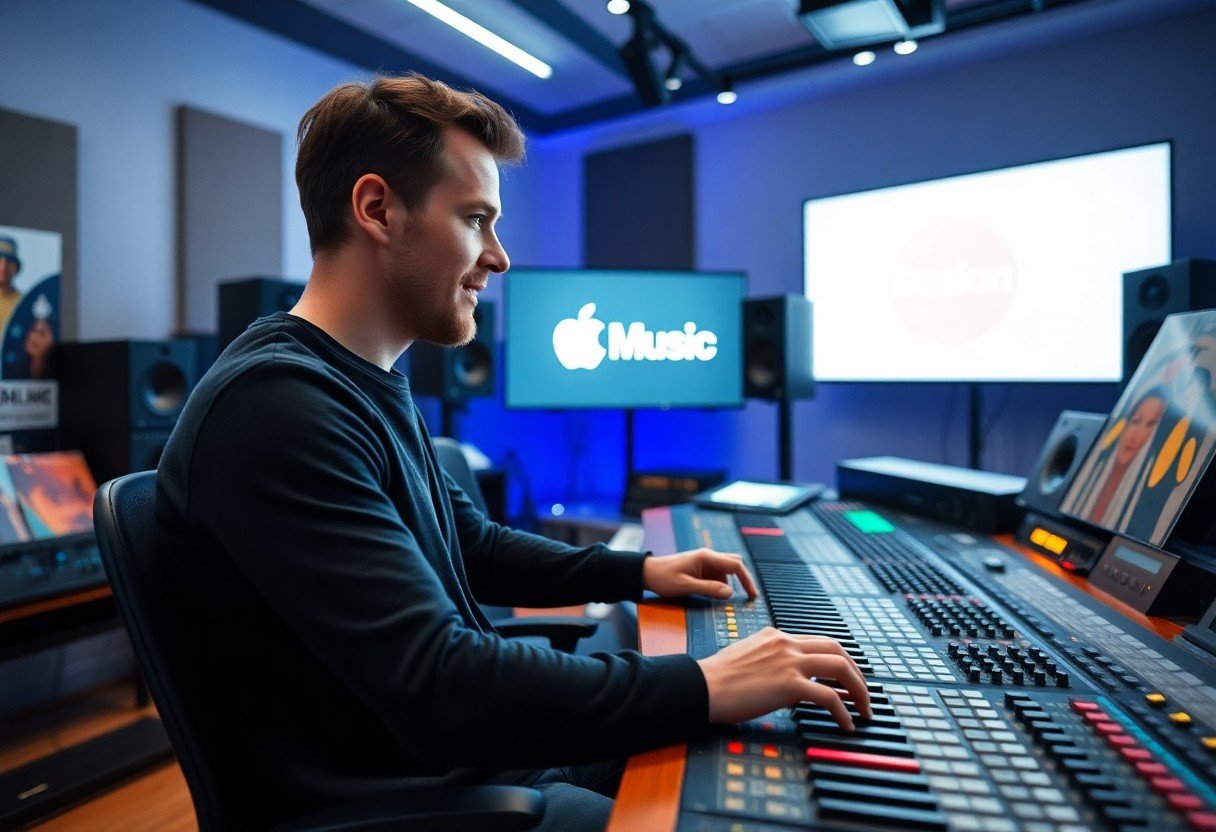Playlists can make or break your music career, and getting featured on Apple Music’s editorial playlists is a game changer. In this post, I’ll share my personal insights on how to catch the attention of Apple Music’s curators through focused strategies and authentic engagement. By understanding the importance of crafting a unique sound and leveraging social media effectively, you can elevate your chances of being heard. Let’s investigate the crucial steps that can help you land on those coveted playlists!
Decoding the Apple Music Algorithm
Understanding the intricacies of the Apple Music algorithm can significantly improve your chances of landing on editorial playlists. The algorithm prioritizes engagement metrics alongside traditional streaming numbers. This means that factors like how long listeners stay on a track, the frequency of replays, and how often your song is added to personal playlists all contribute to its visibility. By examining these metrics and strategizing accordingly, you can enhance your music’s appeal.
The Role of Curators in Playlist Selection
Curators play a vital role in the selection process for Apple Music’s editorial playlists. They are often seasoned music industry professionals with a keen ear for emerging trends and unique sounds. Their personal tastes and insights heavily influence the playlists, making it imperative for you to align your music with their vision while remaining authentic to your style.
Key Metrics Beyond Streaming Numbers
While streaming numbers are important, Apple Music’s algorithm also considers several other metrics that can elevate your tracks. Metrics such as listener retention rates, social media engagement, and feedback from listeners can greatly impact your chances of being featured. If your tracks resonate well and create buzz, the platforms take notice.
Going deeper into these key metrics, social media engagement is critical. For instance, if your music garners genuine attention on platforms like Instagram or TikTok, it signals to Apple Music that your content resonates with audiences, boosting its algorithmic advantages. Additionally, listener retention rates serve as an imperative indicator; if users frequently replay or save your track, it demonstrates that your music has lasting appeal. Overall, a holistic approach that encompasses engagement, listener sentiment, and social reach can ultimately increase your chances of landing on those prestigious editorial playlists.
Crafting the Perfect Submission
Submissions are your chance to capture the attention of the Apple Music editorial team, and every detail matters. I recommend keeping your submission concise yet informative. Highlight what makes your music unique and intriguing, ensuring that every word adds value. Aim for authenticity and transparency; your passion should shine through, creating an emotional connection with the curators. The goal is to leave them wanting to discover more about your work.
Essential Elements of a Compelling Pitch
A successful pitch includes several key components. Start with a captivating artist bio that conveys your story, followed by information about your single or album, including the genre and any notable collaborations. I find that including personal anecdotes about the creation process helps to humanize the submission. Don’t forget to mention any buzz, such as previous playlist placements or radio spins, as well as how you’ve engaged your audience.
Timing Your Release for Maximum Impact
The timing of your release can significantly influence your visibility on playlists. I’ve seen artists succeed by carefully strategizing their launch dates to coincide with specific events, holidays, or seasons that attract a larger audience. Releasing on Fridays, for example, aligns with the industry standard and gives your music the best chance to gain traction over the weekend. Additionally, sending your submission to Apple Music at least two weeks before your release provides ample time for the editorial team to evaluate your track.
Consider industry trends and patterns when planning your release. For instance, summer often brings a surge in feel-good tunes, while fall tends to favor introspective tracks as listeners shift their moods. You can also look at your own analytics to determine when your audience is most engaged, allowing for a targeted release strategy. By aligning your music release with these factors, you maximize potential exposure and create an opportunity for playlist placements that could elevate your career.
Building Your Musical Identity
Establishing a distinct musical identity sets you apart in a saturated industry. Your sound, style, and overall image should resonate deeply with your audience, creating a cohesive narrative that defines who you are as an artist. By being authentic and tapping into your unique influences, you can forge a memorable connection with listeners that will help elevate your chances of catching the attention of editorial playlists on platforms like Apple Music.
The Importance of Consistency in Branding
Consistency in branding reinforces your identity and makes your music more recognizable. Whether it’s through your social media, album covers, or promotional materials, a unified aesthetic and message ensure that fans can easily identify your work. This branding should extend across all platforms and touchpoints, highlighting your essence in a coherent manner that appeals to your target audience.
Leveraging Visuals and Aesthetics
Visuals play a significant role in shaping public perception of your music. From album artwork to music videos, ensuring that your visuals reflect your artistic vision can significantly enhance your presence. Cohesive visual storytelling can elevate your music’s appeal and create lasting impressions with listeners, ultimately attracting playlist curators who resonate with your vibe.
High-quality visuals can make a lasting impact on your audience. Collaborating with artists or designers who understand your vision can yield striking results that enhance your music’s narrative. For example, consider artists like Billie Eilish, whose distinctive imagery and fashion choices have played a crucial role in building their brand. By investing in striking visuals that reflect your sound and message, you can make it easier for editorial teams to see your potential and fit within their playlists, increasing your chances of selection.
Networking with Industry Gatekeepers
Engaging with industry gatekeepers can open doors to coveted playlist placements. I focus on building connections with music bloggers, influencers, and curators who hold significant sway in the music ecosystem. Attending industry events, both virtual and live, allows you to mingle with these key players, making it easier for them to recognize your name and music. A single conversation can lead to opportunities that might otherwise remain out of reach.
Forming Relationships with Influencers and Curators
Building genuine relationships with influencers and curators has been a game-changer for my visibility. I approach them not just as industry contacts but as allies who share a passion for music. Engaging with their content regularly, offering value, and collaborating on creative projects fosters authentic connections, ultimately leading to more willingness to support my music.
Utilizing Social Media for Maximum Engagement
Social media serves as a powerful tool for reaching industry insiders and potential fans alike. I leverage platforms like Instagram and Twitter to showcase my personality, share behind-the-scenes content, and engage actively with followers. Posting consistently and authentically not only keeps my audience engaged but also increases the chances of getting noticed by curators who happen to stumble upon my content.
Interestingly, using analytics from social media platforms like Instagram provides insights into what resonates with my audience. I’ve found that posts featuring snippets of new music or inviting followers to personal jam sessions garner higher engagement rates. Tailoring my content based on these insights helps me not just connect with fans but also catches the attention of curators who are seeking fresh talent that resonates with existing listener demographics. A combined focus on *engagement* and *authenticity* creates an ecosystem where influential figures can naturally find and support my music.
Analyzing Successful Case Examples
To truly grasp the strategies behind landing on Apple Music editorial playlists, examining successful case studies can provide immense value. I’ve dived into the journeys of various artists, dissecting their approaches and outcomes to identify patterns that led to featuring on renowned playlists. Each analysis reveals the unique sounds, marketing techniques, and fan engagement tactics that set these artists apart, helping us understand the nuances of what makes a track desirable for editorial consideration.
Breakdown of Jesper Jacobi’s Past Releases
Jesper Jacobi’s rise on Apple Music can be traced through his past releases, which highlight a balanced mix of originality and relatability. His singles often showcase a well-structured sound and thematic consistency. By analyzing data such as streaming counts and chart performance, it becomes evident that tracks like “Nightfall” and “Embers” resonated exceptionally well with listeners, driving significant playlist placements and maintaining listener engagement over time.
Lessons Learned from Other Featured Artists
Exploring the paths of other artists featured on playlists provides actionable insights. Many of these musicians have prioritized building strong networks within the industry, collaborating with established artists, and leveraging social media effectively to create buzz around their releases. It’s evident that a strategic focus on authenticity and fan interaction has become the common thread in successful campaigns, leading to better visibility and playlist inclusion.
For instance, when analyzing how artists like Tones and I or Dua Lipa achieved their breakthroughs, it’s clear that they each employed a robust digital marketing strategy complemented by authentic storytelling through their music. These artists consistently engaged their audiences via social media, making their journeys feel personal. Learning from these strategies, I suggest emphasizing your narrative and ensuring that each release is paired with an active marketing campaign that highlights its themes and connects with potential fans. Keeping an eye on trends in listener engagement can also guide your release strategy and build a loyal following, significantly enhancing your chances of editorial playlist placement.
Conclusion
As a reminder, the key to getting on Apple Music editorial playlists, as I learned from Jesper Jacobi, is not just about creating great music but also about building genuine relationships within the industry. I encourage you to engage with curators, promote your work actively, and understand Apple Music’s editorial guidelines. By following these strategies, you can enhance your chances of getting noticed and making it onto those coveted playlists. Stay persistent, and soon enough, you might find your music featured in front of a wider audience.
FAQ
Q: What strategies did Jesper Jacobi employ to get his music on Apple Music Editorial Playlists?
A: Jesper Jacobi focused on building relationships within the music industry, particularly with Apple Music curators. He emphasized the importance of networking, collaborating with other artists, and understanding the editorial team’s preferences. Additionally, he created high-quality music that had a strong storytelling element, which he believed resonated well with curators looking for compelling content.
Q: How can independent artists increase their chances of being featured on Apple Music Editorial Playlists?
A: Independent artists can enhance their chances by establishing a strong online presence, engaging with their audience on social media platforms, and utilizing music distribution services that offer playlisting opportunities. Collaborating with influencers and leveraging user-generated content can also attract the attention of curators. Consistency in releasing music and updating playlists can help maintain visibility.
Q: What role does social media play in promoting music for editorial playlists according to Jesper Jacobi?
A: Jesper Jacobi highlighted that social media serves as a powerful tool for building a fan base and interacting with listeners. By effectively utilizing platforms like Instagram, Twitter, and TikTok, artists can share their music, behind-the-scenes content, and engage in conversations that might catch the attention of curators. This interaction fosters a greater connection with potential listeners, which can ultimately lead to increased playlist placements.
Q: Is it important for artists to have a PR strategy while aiming for Apple Music Editorial Playlists?
A: Yes, having a public relations strategy can significantly boost an artist’s chances of gaining attention from music curators. Jesper Jacobi advocated for creating press kits that include artist bios, high-resolution images, and links to music. A well-crafted PR campaign can help secure media coverage and spotlight features that can increase visibility amongst curators.
Q: What should artists focus on in the music creation process to appeal to Apple Music curators?
A: Jesper Jacobi advised artists to prioritize authenticity and craftsmanship in their music. Creating songs with relatable themes or unique sounds can capture the attention of curators. Additionally, investing in professional production values and ensuring that the final product is polished can make a significant difference in whether or not an artist is selected for an editorial playlist.




